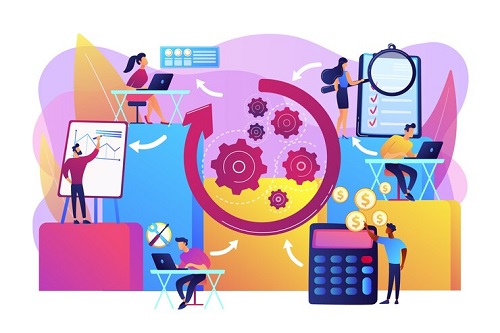In today’s fast-paced digital landscape, technology is not just a tool but a pivotal force that drives competition, shapes industries, and defines market leaders. Yet, amidst the allure of innovation, there lies a silent threat that many businesses overlook—tech stagnation. This blog delves into the hidden costs associated with falling behind in technology, exploring its impact on competitive positioning, financial health, customer experience, and security, while offering strategies to stay ahead.
Understanding the Competitive Landscape
Technology is the cornerstone of modern competition. It fuels innovation, enhances efficiency, and opens new avenues for growth. In industries ranging from retail to healthcare, technological advancements have redefined the rules of engagement. Consider the retail sector, where e-commerce giants like Amazon have revolutionized shopping with AI-driven recommendations and seamless logistics. Similarly, in healthcare, telemedicine and wearable technologies have transformed patient care, making it more accessible and efficient.
The rapid pace of technological advancements means that staying static is not an option. Businesses must continuously innovate to maintain their competitive edge. Failure to do so can lead to significant repercussions, as competitors who embrace technology can quickly capture market share and redefine consumer expectations.
The Dangers of Falling Behind
Falling behind in technology can result in a substantial loss of market share. Tech-savvy competitors are not just competitors; they are disruptors who can quickly render traditional business models obsolete. Take, for example, the taxi industry, which was upended by ride-sharing platforms like Uber and Lyft. Companies that failed to adapt to this technological shift found themselves struggling to survive.
Beyond market share, there’s the risk of becoming obsolete in the eyes of consumers. Today’s consumers are tech-savvy and expect businesses to offer seamless, digital-first experiences. A brand that fails to meet these expectations risks damaging its reputation and losing customer trust. In a world where brand loyalty is increasingly fragile, staying technologically relevant is crucial.
Financial Implications of Stagnation
The financial implications of tech stagnation are profound. Maintaining outdated systems can be costly in the long run. Legacy systems often require extensive maintenance and lack the flexibility to integrate with modern solutions, leading to increased operational inefficiencies. This not only drives up costs but also hampers productivity and innovation.
Moreover, businesses that fail to adopt cost-saving innovations miss out on significant financial benefits. Cloud computing, for instance, offers scalable resources at a fraction of the cost of traditional IT infrastructure. Companies that resist such advancements may find themselves at a financial disadvantage.
Impact on Customer Experience
Customer experience is at the heart of business success, and technology plays a critical role in shaping it. Outdated technology can lead to poor customer service, as systems struggle to handle modern demands. Long wait times, inefficient processes, and lack of personalization can frustrate customers and drive them to competitors.
Meeting evolving customer expectations is essential. Consumers today expect seamless, personalized experiences across all touchpoints. Companies that fail to deliver risk losing their customer base. Consider the case of Blockbuster, which ignored the digital shift in media consumption and ultimately fell to Netflix, a company that embraced streaming technology and transformed the entertainment industry.
Security Risks of Outdated Systems
Security is another critical area where outdated technology poses significant risks. Older systems are more vulnerable to cyber threats, as they may not receive regular updates necessary for data protection. In an era where data breaches are increasingly common, the legal and financial repercussions can be severe.
Regular updates and modern security measures are essential to safeguard sensitive information. Companies that neglect this aspect not only risk financial penalties but also damage to their reputation and loss of customer trust.
Strategies for Staying Ahead
To avoid the pitfalls of tech stagnation, businesses must proactively embrace change. Here are some strategies to stay ahead:
- Identify Necessary Technology Upgrades: Regularly assess your technology infrastructure to identify areas that require updates. This includes hardware, software, and processes.
- Continuous Learning and Adaptation: Foster a culture of innovation and continuous learning. Encourage employees to stay updated with the latest technological trends and tools.
- Strategic Partnerships and Collaborations: Collaborate with tech companies and startups to leverage their expertise and gain access to cutting-edge technologies. Strategic partnerships can accelerate innovation and provide a competitive edge.
- Invest in Research and Development: Allocate resources for R&D to explore new technologies and their potential applications in your industry.
- Customer Feedback and Engagement: Engage with customers to understand their needs and expectations. Use this feedback to guide your technology strategy and ensure it aligns with customer demands.
By embracing these strategies, businesses can not only avoid the hidden costs of tech stagnation but also position themselves as leaders in their respective industries. In a world where technology is both a challenge and an opportunity, staying ahead is not just a choice—it’s a necessity.



